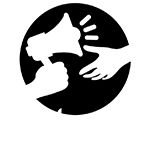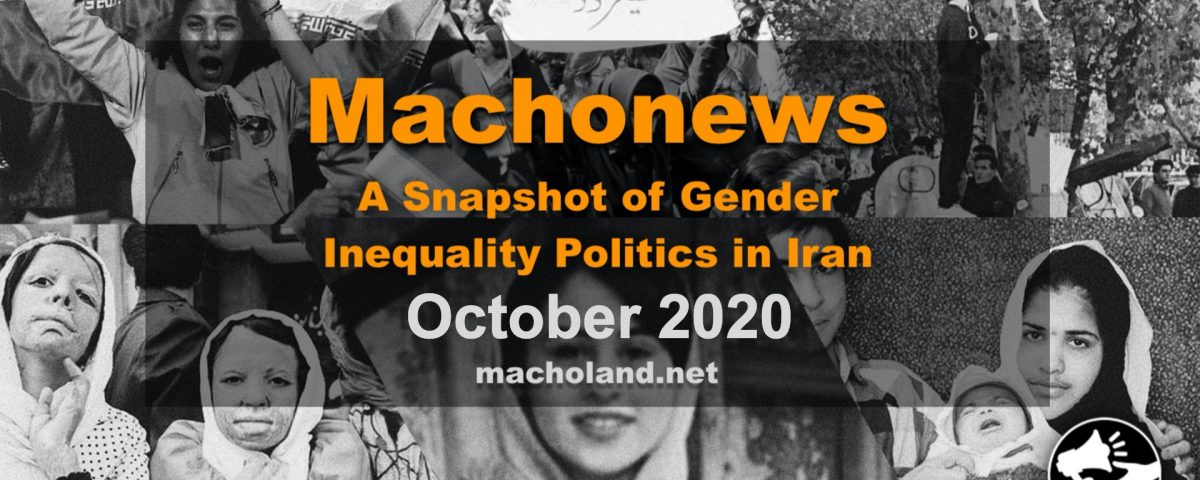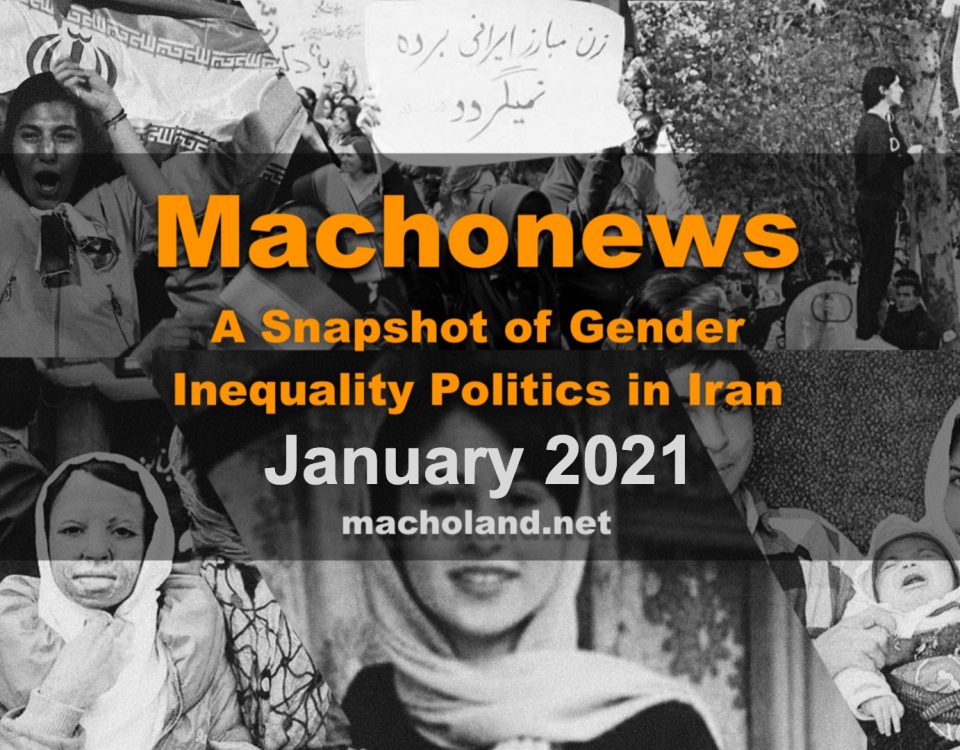October 2020 Machonews: A Snapshot of Gender Inequality Politics in Iran

تغییرات اقلیمی و نقش آن در افزایش شکاف جنسیتی
1 نوامبر 2020
روایت یک کلاهبرداری عاطفی
18 نوامبر 2020This is the October 2020 Machonews, a monthly report covering the most significant gender and women’s rights related events and policies in the Islamic Republic of Iran. This monthly article is produced by Macholand, a project by Spectrum, a queer-feminist NGO (Association 1901) based in France.
Female Representation in the Government
Would you have the courage to run in the presidential elections? This is a question that Masoumeh Ebtekar, the Vice President of Women and Family Affairs, dismissed. She said that the issue of women’s participation in the presidential elections should be questioned by the Guardian Council. “Personally, I do not see any obstacle to the presence of women in elections,” she said, even though in the last 40 years, a woman has never qualified to run in the presidential election. When Ebtakar, as one of the oldest and most respected female political figures in Iran, announces that she doesn’t want to participate in the presidential elections, will there ever be a woman who will have the courage to break this stigma? The upcoming election next month may bring other female names.
Article 115 of the Iranian Constitution states that one of the criteria for a presidential candidate is being “rajol-e siasi”, which can be interpreted as a “political man” or a “political personality” in Arabic. This discriminatory article clearly downgrades women significantly. In 1997, Azam Taleghani, a women’s rights advocate, was the first woman to register as a candidate for president. The Guardian Council, argued that Article 115 refers only to men, and rejected her application. Since then, the government has also rejected any other female candidate who has tried to run. Feminists believe that even if the wording of the article were to be changed, the cultural impact that has been sustained would remain.
Marriage and Abortion Rights
On the day known as “Girl’s Day” in Iran, Ebtekar said that girls’ marriage under the age of 14 should be countered. This came after she announced that 30,000 girls under the age of 14 get married in Iran every year. However, Ebtekar also mentioned that girls’ marriage in their adolescence, aged 15 or 16, is “not a problem.” Masoumeh Ebtekar, who is in her fourth year in office under Hassan Rouhani’s government, considers the marriage of girls under the age of 18 to be “without objection”, regardless of Iran being a member of the Convention on the Rights of the Child.
Valid and reasonable sex education is not being taught in schools, while high school girls are being forced to marry men much older then them. Meanwhile, according to the latest published statistics, thousands of voluntary terminations of pregnancies occur in Iran every day. Termination is only legal if the mother or fetus’s life is in danger. Extramarital pregnancies account for ten percent of these statistics. The rate of mothers getting unsafe abortions is increasing, putting their lives in danger. According to Zahra Lajevardi, a member of parliament and population committee, the committee was drafting tougher penalties to end pregnancies voluntarily. The punishments come as gynecologists announce that women have been begging them for pills and condoms since 1993, when the government banned the distribution of contraceptives in health centers.
The Consequences of Social Activism in Iran
Mahdieh Golroo, a civil activist living outside of Iran, posted a video on her Instagram page announcing that Iranian interrogators had contacted her and asked her to cooperate with them. She says that integrators have threatened and harassed her if she doesn’t comply. She was first arrested under the charges of “propaganda against the state” and “assembly and collusion with the intent to disrupt national security”. She was arrested once again in 2014, under unknown charges. The Iranian government has threatened Golroo by saying that if she does not cooperate, her private videos and photos from her laptop and mobile phone, seized by the Islamic Revolutionary Guard Corps at the time of her arrest, will be published on cyberspace. The Islamic Republic has shown that Iranian feminists will receive continuous abuse for their opinion, even outside of the country.
Narges Mohammadi, a women’s rights and human rights activist, was released after five years in prison. Her husband, Taghi Rahmani, reported that she was taken to her parents’ house in Zanjan in a prison car at 3 am, without prior notice of her release. Mohammadi was imprisoned in May 2015 to serve her 16-year sentence. She was sentenced to six years for propaganda against the regime and another ten years for her activities in the “Step by Step to Abolish the Death Penalty” campaign.
The Chief Justice of the Zanjan Province said that Narges Mohammadi’s sentence had been reduced, due to the passing of a recent law reducing prison sentences, as she was released from prison “with an Islamic rapport”. According to him, Narges Mohammadi was sentenced to 10 years in prison, which was reduced to eight and a half years, using the law reducing punishment and the court’s consent. She was released from prison after serving eight and a half years.
Last month, the first court hearing of Mehraveh Khandan, daughter of Nasrin Sotoudeh, was held. Mehraveh was accused of “insult and assault” toward a prison guard when meeting her mother in Evin Prison in Tehran one year ago, during which this female prison officer objected to her hijab. According to Reza Khandan, Sotoudeh’s husband, the case judge asked the plaintiffs to submit a CD containing the video of the meeting hall on the day in question so that they could prove the wrongdoing. Reza Khandan also believes that his 19-year-old daughter’s court case is being used to put added pressure on Sotoudeh. After Mehraveh Khandan’s case was issued, Sotoudeh announced that she would no longer be meeting with her children from prison.
The Prosecution of Sexual Offenders
Thirty-three-year old Keyvan Emamverdi, arrested last month for raping multiple women, has been charged with “corruption on earth”, punishable by death. Emamverdi owned a bookstore near the University of Tehran. Dozens of social media users have accused him of raping them by luring them into his house and slipping anesthetics into their drinks. Sardar Rahimi, the Tehran police chief, announced his arrest on the 4th of September. Somayeh Rafiei, a member of parliament, told Hamshahri newspaper, “Tehran police chief said Keyvan Emamverdi confessed to raping 300 girls in a span of ten years.” Videos of the rape of 46 girls were found in the house of Emamverdi, believed to be trophies. Thirty of the 300 victims have filed lawsuits against him, and ten of them have appeared in court to identify him.
In an interview with Etemad newspaper, a plaintiff’s lawyer said that she saw Emamverdi with two of his victims on Saturday. She noted that Emamverdi had no sign of sadness, remorse, or stress caused by confessing to 300 rapes. In response to this news, several plaintiffs in the case issued a statement, taking a stand on the published story. They wrote in a statement, “our case is clearly entitled rape, and we want the same criminal case to be heard in a competent court to deal with our own moral damages. Our demand from this case is that these crimes be tried in a fair manner.” Under the Islamic Republic rule, drinking alcohol and having sexual relations outside of marriage is strictly forbidden. The 30 women who filed lawsuits against him knew that if they testified against him, they could be challenged with another lawsuit for these acts. However, all women have still testified.
Following the Emamverdi case, the Iranian #MeToo movement continued, and more names of sexual abusers surfaced. One of the biggest names, Aydin Aghdashloo, an internationally acclaimed artist with connections in the government. In a report published in the New York Times, thirteen women accused Aghashloo of sexual abuse and misconduct over a span of 30 years. In separate interviews, all 13 of his victims, family members, friends, and colleagues, accused him of wrongdoing, one of them, saying they were 13 at the time. In a report published by Farnaz Fassihi, it was noted that most victims did not know each other and were students of Aghdashloo in different decades. Nineteen interviews with the New York Times described Aghdashloo as the “Harvey Weinstein of Iran”. They said that the progress or destruction of these women’s careers depended on their acceptance of Aghdashloo’s proposals. Earlier, Aghashloo had said in response to the allegations of sexual harassment that he would file lawsuits against the women. After this news was published, an art exhibition of Aghdashloo’s work in Toronto was canceled.



